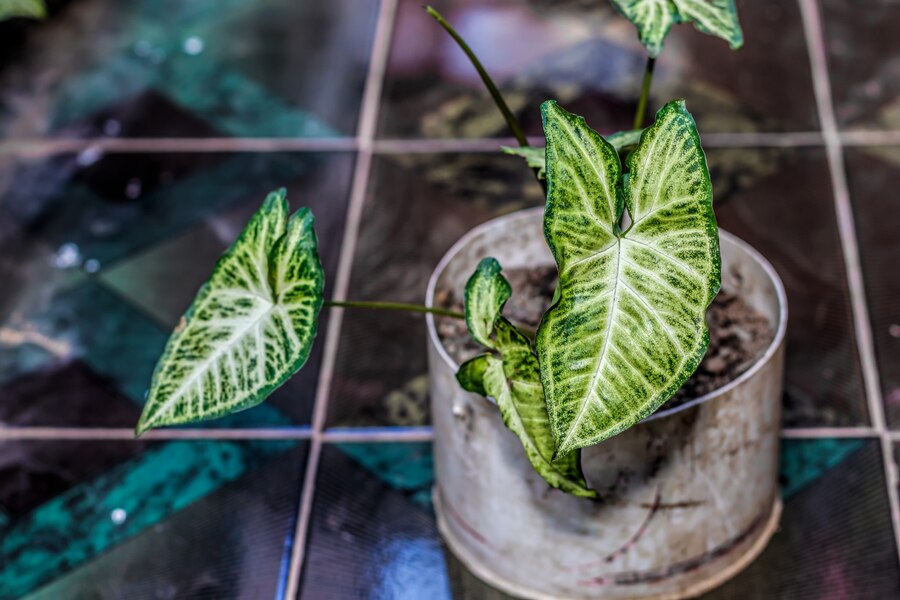The Strawberry Shake Philodendron, scientifically known as Philodendron ‘Pink Princess’, is a captivating cultivar prized for its striking foliage and easy-care nature. This article delves into the characteristics, care tips, propagation methods, and aesthetic appeal of the Strawberry Shake Philodendron, offering enthusiasts a comprehensive guide to nurturing this colorful houseplant.
Introduction to Strawberry Shake Philodendron
Botanical Description
The Strawberry Shake Philodendron features heart-shaped leaves with varying shades of green, cream, and pink. Its foliage is adorned with splashes of light pink, resembling brushstrokes of paint, making it a visually stunning addition to any indoor space. The leaves can exhibit variegation ranging from subtle pink streaks to bold patches of color, depending on light conditions and maturity.
Ornamental Value
Philodendron ‘Pink Princess’ is renowned for its ornamental appeal, adding a touch of tropical elegance to homes, offices, and indoor gardens. The vibrant foliage contrasts beautifully against its dark green background, making it a favorite among plant collectors and interior decorators alike.
Care Requirements
Light
Provide bright, indirect light for the Strawberry Shake Philodendron to thrive. Avoid direct sunlight, as it can scorch the delicate leaves. Place the plant near a north or east-facing window where it can receive filtered sunlight or dappled shade throughout the day.
Temperature and Humidity
Maintain moderate room temperatures ranging from 65°F to 80°F (18°C to 27°C). Philodendrons prefer humidity levels of 50% or higher, so mist the leaves regularly or place a humidifier nearby to create a humid environment, especially during dry winter months.
Watering
Water the Strawberry Shake Philodendron when the top inch of soil feels dry to the touch. Ensure proper drainage to prevent waterlogging, as Philodendrons are susceptible to root rot. Reduce watering frequency during the winter months when growth slows down.
Soil and Fertilization
Plant the Strawberry Shake Philodendron in a well-draining potting mix enriched with organic matter. A blend of peat moss, perlite, and orchid bark provides excellent aeration and moisture retention. Fertilize the plant monthly during the growing season (spring and summer) with a balanced, water-soluble fertilizer diluted to half strength.
Propagation
Stem Cuttings
Propagate Philodendron ‘Pink Princess’ through stem cuttings. Select healthy stems with at least two nodes and trim them just below a node. Place the cuttings in water or directly into moist potting mix, ensuring the nodes are submerged or buried. Keep the cuttings in a warm, humid environment until roots develop.
Leaf Cuttings
Alternatively, propagate leaf cuttings by carefully cutting a leaf with a node attached. Plant the node in moist soil or water until roots form. Provide warmth and indirect light to encourage rooting and growth.
Common Issues
Pest Management
Monitor the Strawberry Shake Philodendron for common pests such as spider mites, mealybugs, and aphids. Treat infestations promptly with insecticidal soap or neem oil, ensuring to cover both sides of the leaves and stems.
Leaf Browning or Yellowing
Leaf browning or yellowing may indicate overwatering, underwatering, or nutrient deficiencies. Adjust watering habits, improve drainage, and fertilize as needed to maintain healthy foliage.
Conclusion
Philodendron ‘Pink Princess’, or the Strawberry Shake Philodendron, is a captivating houseplant cherished for its vibrant foliage and low-maintenance care requirements. By providing adequate light, humidity, watering, and proper fertilization, plant enthusiasts can enjoy the beauty of this colorful cultivar year-round. Whether displayed as a solo specimen or integrated into a lush indoor garden, the Strawberry Shake Philodendron promises to elevate the aesthetic appeal of any living space.










